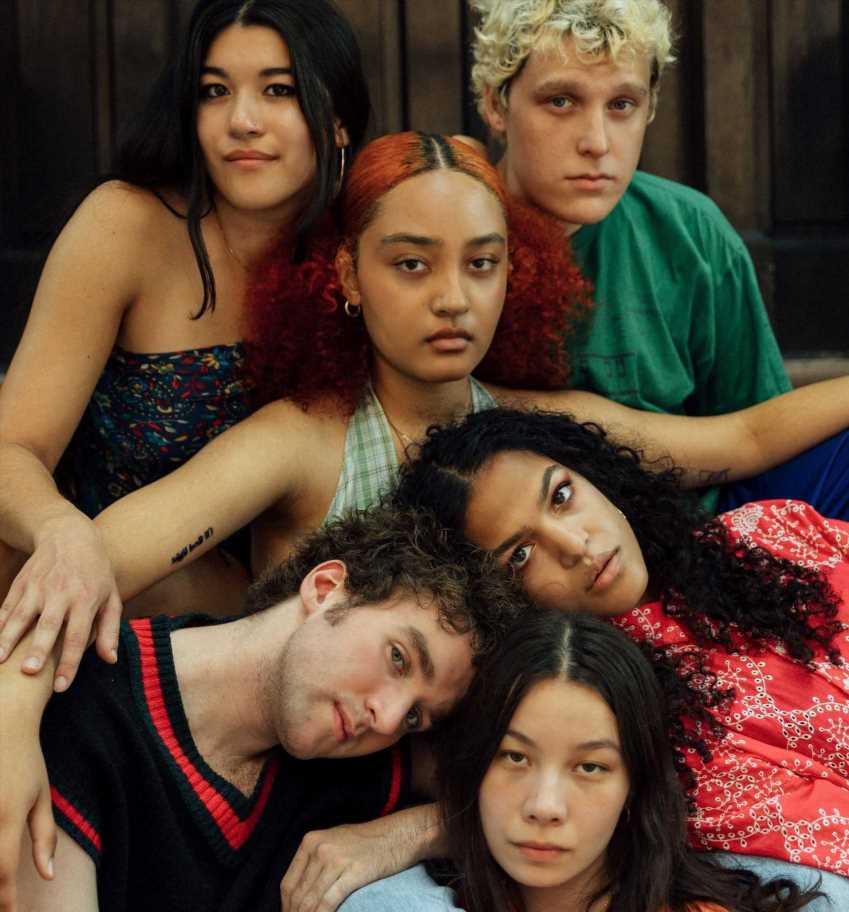By Danielle Chelosky
In many ways, Sasami Ashworth’s life has been leading up to this moment. Studying classical music through middle school and high school, the Los Angeles-based artist has been refining her ear since she was a kid. After furthering her studies in college, she became a music teacher while touring with bands part-time. It was when she was assisting Bright Eyes member Nate Walcott with arranging for other artists that she realized what she wanted to do.
“I started understanding that my fluency in classical music and rock music could be tapped into,” she says over the phone in late January. “I could tap into that fluency, and have a role as a translator between the two worlds. I started doing that work for other artists, like Curtis Harding, and I did vocals for Wild Nothing and I played horn on Hand Habits.”
She switched to touring full-time in the well-known indie-rock group Cherry Glazerr. In 2019, she released her eponymous debut solo album, which boasts an ethereal image of her posing unsteadily on a melting glacier. The picture encapsulates the unforgettable, emotionally intense landscape of the music; the synthy songs evoke a bittersweet feeling, powerful in their ability to balance sadness and beauty.
Ashworth doesn’t consider that to be her first album. “It was really a way for me to process my emotions and test out production ideas that I had over the years,” she says. “Participating on so many other people’s albums kind of feels like I’ve been different organs in other people’s bodies. I’ve been the liver, I’ve been the lungs, I’ve been the small intestine of other people’s projects. I feel like I eventually got to the point where I was ready to put all of those experiences together and make my own body of work. I was ready to be the brain of the operation for that album.”
Squeeze, out today (February 25), is a rebirth. The singles already hinted at this; the ferocious “Sorry Entertainer” was unleashed last year, explicitly conveying the metallic path she was heading down. Hyper-speed drums, caustic riffs, and volatile vocals come together to form a daunting anthem that explodes with pure rage. She goes from whispering creepily to screaming to coughing. She’s almost possessed. “Skin a Rat,” which arrived months later, dove deeper into this exorcism.
For Ashworth, this pivot was natural in light of the pandemic. “With creating something at a time that was really dark and depressing and awful, you can go in a couple different directions. One is to create something that turns that mood around, like something uplifting and bright. Or a second option would be to create something that’s kind of sad and contemplative and going deeper into that emotional space. And then third would be leaning deeper into the element of frustration, anger, and rage. I decided to go more in that direction.”
“I was getting really sick of being immediately compared to Jay Som, Mitski, and Japanese Breakfast just because we’re all Asian femme,” she continues. “I was actively pushing to make a heavy rock album that couldn’t even be called an indie-rock album. That’s part of the reason why I leaned into metal, because I was kind of trolling. I was like, ‘I dare you to fucking compare me to all these people if I’m literally making metal music.’”
This foray is Ashworth’s way of proving herself, but it’s also a means for her to carve space for herself and her listeners in a scene that’s been historically dominated by white men. “I think that it’s part of an artist’s job to demystify certain cultural textures and sounds and worlds and shine a light on them,” she says. Even so, the album isn’t trapped inside of a single genre. “Make It Right” is a spurt of jangly indie-pop that offers a couple of minutes of weightlessness amidst the madness; “Feminine Water Turmoil” disposes of the prominent bass that characterizes the heavy album and instead brings on a bone-chilling string arrangement.
Ashworth’s focus, she explains, is not on drawing from certain influences or playing with specific genres; she is simply attempting to channel moods by thinking of her music in terms of colors, textures, and temperatures. It is a bare-bones approach, so it makes sense that she sees herself as a composer rather than a rock musician or an indie singer-songwriter. She is leading an eclectic orchestra, guiding the listener through a variety of sounds, most of which can’t really easily be categorized or labeled.
“I made a challenge for myself to make a body of work that I think would keep people’s attention the whole time,” she says. “I’ve made an unspoken promise with the listener; if they promise to give me 35 minutes of their time, I promise to keep it interesting for them.”
Ashworth, because of her years of teaching and touring, knows how to tend to attention spans. “I have this idea that if you can keep the attention of 35 children with tambourines, you can definitely keep the attention of a roomful of drunk adults,” she says. The album conjures the energy of a live show; she intentionally focused on theatrics and improvisation, which lend the songs the kind of spontaneous magic found in real life, where it’s impossible to tell what’s around the corner. The album art, morphing her with a Japanese yōkai folk spirit called Nure-onna, provides a ruthless image that grounds the listener in this fantastical world where aggression is more than welcome. Violence becomes a love language, and destruction is a form of communication.
Listening to Squeeze is, as Ashworth says, very much like going through a haunted house or a corn maze. The influence of Japanese horror, specifically the movies Lady Snowblood and House, definitely enhances the intensity. The closer, “Not a Love Song,” feels like the perfect exit into safety. It encapsulates the moment of relief of stepping out of the dark building and being wrapped up in the light and the coolness of the world, and the adrenaline comedown that slowly seeps in. Ashworth is not the only one being reborn with this record; the listener is, too.
Source: Read Full Article

